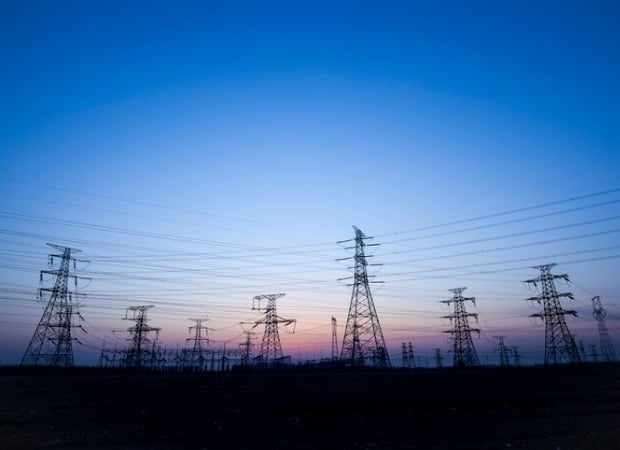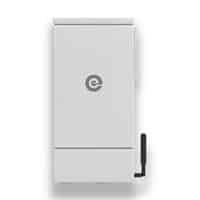In this special Energy Matters article, we talk to Neal Stewart – co-founder of Edge Electrons, creator of the EdgeIQ voltage regulator – about a little-known fact about our electricity grid: that we are paying for more electricity than we actually need…
While debate about the high cost of electricity is now a national obsession, the idea that Australian consumers are being force-fed unnecessary electricity is not so widely known.
The cause of the problem is fluctuations in grid voltage, and voltage affects how much energy appliances use. This is a result of Australia’s grid becoming more unpredictable as old power stations close down. In March 2018 the Australian Energy Market Commission, key energy advisor to the Commonwealth Government, released a report on the problem.

It found Australia has a reliable amount of power supply but keeping that supply stable is becoming harder. “Managing the power system – keeping things like frequency and voltage within technical limits – is becoming more challenging,” the commission warned.
The problem of changing voltages in our powerlines has even been the focus of an ABC TV 7:30 Report program.
Edge Electrons solving the problem of high grid voltage
The problem is that the electricity grid is designed to have massive coal-fired power stations monopolising power distribution to homes and industry. This made it easy to control the voltage across the power lines.
The massive increase in wind farms and rooftop solar in Australia over the last decade has changed this situation. The grid now has power feeding in from many different sources, which makes maintaining steady line voltage difficult. The distribution network managers have not kept pace with changing conditions, and have not introduced technology that could solve these issues.
The result is that an Australian company is now warning about high grid voltages and offering a solution. Edge Electrons says customers are in fact paying for electricity they don’t need. High voltage is also wearing out appliances before their time. Edge Electrons’ device, the EdgeIQ, offers a solution to these problems.

The EdgeIQ is a household voltage regulation device that does two things:
- It keeps appliances running at the correct voltage, which saves power.
- It protects appliances from damaging power surges as well as solar inverter shutdown.
Higher voltage = bigger electricity bills
Wangaratta-born Neal Stewart is a scientist, inventor and co-founder and CTO of Edge Electrons. After an international career in the power electronics industry, Stewart looked at the emerging problem of Australia’s grid stability. He says the company’s name reflects its mission: to bring power electronics regulators to the edge of the electricity grid to protect the consumer.
Stewart told Energy Matters that data shows customers could save 8-10 per cent on their electricity bills if home voltage remained at 220-230 volts.
“For every 1% reduction in voltage there’s 1% reduction in kilowatt hours,” he says. “But it goes the other way too, and this is where the consumer gets hurt and doesn’t know it.
“If there’s a 5% increase in the grid voltage, consumers are paying an extra 5% in kilowatt hour usage because the appliances are using more energy. The appliances run at 230 volts, then anything above that they start to eat up more power.”
In Australia, electricity distributors must deliver 230 volts plus 10% or minus 6%. As a result, the range is 216 – 254 volts. This is not ideal for efficient appliance operation.
“You can have continuous high voltage and then you have very high surges,” Stewart says.
“I was in Melbourne recently and there was an electrical storm. We have circuits in the EdgeIQ to protect the house from that. We can also see voltage surges of 265, 275 volts – we have the data.”
A look inside home electricity supplies
Stewart’s data collected from EdgeIQ regulators installed in homes gives a first look at what’s really happening to the power supply.
“No one has done this,” he says. “We’re putting EdgeIQ units on the house so we’re reporting these voltages and we have high resolution data.”
The idea for the EdgeIQ came after Stewart researched the impact of renewable energy like wind and solar power on the grid. He saw the emerging problem of voltage stability because of renewables like rooftop solar feeding into it.
“The EdgeIQ is a voltage regulation device for houses,” he said. “It’s really useful for homes with solar PV systems. It uses power electronics and software in a device attached to the house that stabilises the grid voltage. We literally separate the house from the grid, and there’s no other technology out there that does that.
“When we put the EdgeIQ on the house, we can process the power so that we aren’t concerned about the fluctuations on the input. The consumer is fully protected, because high voltages damage appliances.”
EdgeIQ protects the solar inverter
When it comes to solar, the most vulnerable part of the energy system is the inverter. Stewart cites Queensland government research into solar inverters.
With high voltage, the inverters’ relays switched on and off too often as they tried to protect the device, which effectively wore them out. “Once again the consumers are out of pocket because of high voltages damaging their solar inverters,” Stewart says.
Inverters use a self-protective tactic known as over-voltage lockout, or OVLO. This disconnects the inverter from the grid when it encounters high voltages. Because inverters can only deliver 216 to 254 volts, if the voltage approaches the 254 volt limit, they disconnect from the grid.
Proper regulation of the voltage to the inverter prevents this. But it also lets the inverter feed more power into the grid, benefiting households on a solar feed-in tariff.
“If you put the solar inverter on the output of an EdgeIQ, the solar inverter only sees 220 volts. If it tries to increase that voltage and the house is not using the power, the additional energy is now boosted back to the grid to maintain that 220 volts.
“So in addition to protecting the house and optimising the energy usage and lengthening the life time of appliances, the EdgeIQ also optimises solar export to the grid.”
The EdgeIQ also reduce home energy use without households having to change their electricity use behaviour. The energy saving happens quietly in the background by the EdgeIQ.
The future of energy distribution: microgrids
Stewart believes the future will be one where small power networks produce energy for local use. This model, known as distributed energy generation, is where electricity is fed into the grid from a number of sources. These include rooftop solar panels and wind turbines.
These microgrids will replace the current distribution model, where electricity can travel hundreds of kilometres from the power station to the home.
“We’re going to see microgrids being funded, probably publicly, driven by market demand. They will have large batteries servicing a number of houses in the microgrid,” Stewart says.
“This is total disruption in a classical legacy industry, and it’s chaotic. The whole system will break up into high level networks controlling local generated energy on microgrids.”
What will come out this disruption is a new kind of electricity network, based on microgrids. In this new model, consumers will have more control over the amount and quality of the electricity they are using.













































